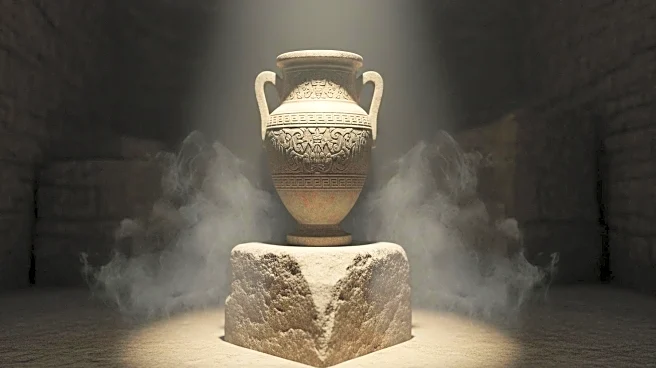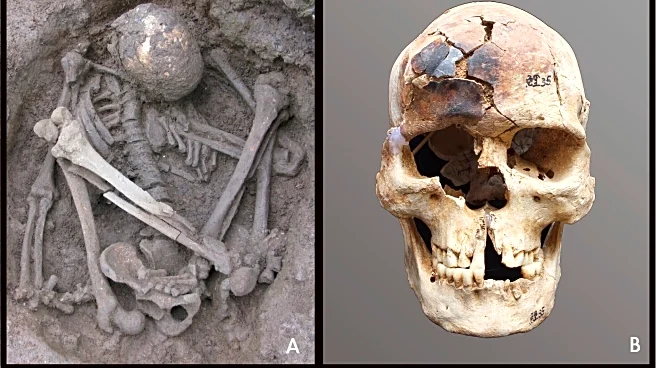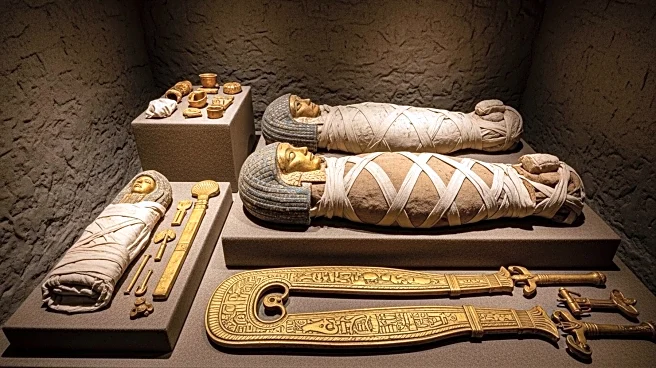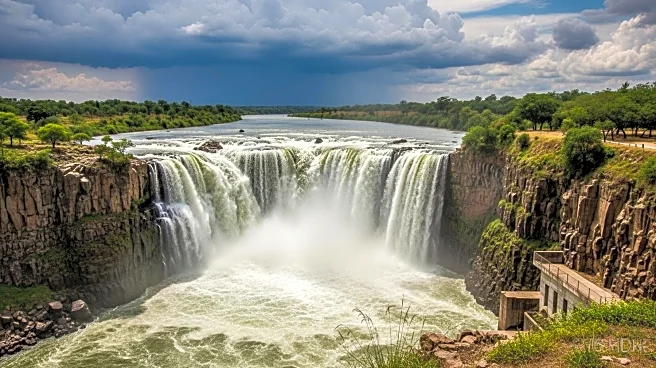What's Happening?
Recent research indicates that ancient societies in China and Southeast Asia may have practiced smoke-drying their dead, effectively mummifying them thousands of years before the Egyptians. The study, published in the Proceedings of the National Academy of Sciences, found evidence of this practice in humid regions, where bodies showed scorch marks inconsistent with cremation. The findings suggest that mummification by drying was a method used to preserve bodies, possibly for cultural reasons, allowing relatives to maintain contact with the deceased.
Why It's Important?
This discovery challenges the traditional understanding of mummification, which has been primarily associated with ancient Egypt. The findings suggest that the practice of preserving bodies was more widespread and ancient than previously thought, indicating a shared cultural significance across different societies. This could lead to a reevaluation of the history of mummification and its role in ancient cultures, providing new insights into the beliefs and practices of early human societies.
Beyond the Headlines
The study highlights the cultural importance of mummification, suggesting that it was not only a method of preservation but also a way for societies to maintain a connection with their ancestors. This reflects a deep-seated human desire to keep loved ones close, even after death, and may have implications for understanding the spiritual beliefs of ancient cultures.











